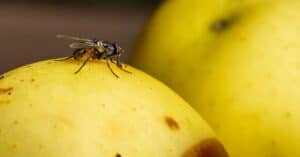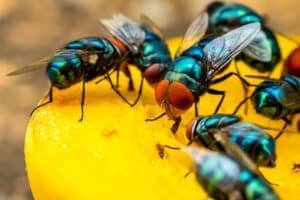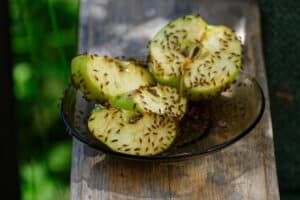Flies are a nuisance and cause you to become a fly-swatting ninja when trying to cook, eat, or enjoy the outdoors. But where do these pesky insects come from, and where do flies nest?
Flies don’t make nests! However, they lay eggs and rest in warm, damp areas, such as in or around trash cans, floor drains, on the sides of buildings, compost piles, bushes, and other plants.
While flies prefer rotting organic material, many indoor and outdoor areas make suitable places to lay eggs. Let’s learn about flies, what conditions flies prefer, and how to prevent an infestation.
How to Identify a House Fly
The first step in eliminating flies is to identify the type of fly. The most common type of fly is the housefly (Musca domestica). Houseflies are dark gray, around ¼ inch long, with dark brown or black stripes. They have erratic and energetic movements, flapping their wings around 200 times per second.
A housefly has an average lifespan of 20 – 30 days, with a similar lifecycle to other insects, which is as follows:
- Fertilized egg
- Larvae phase (maggot)
- Pupa phase
- Adult
When the conditions are right, especially during the summer when the weather is warm, a housefly can go from egg to adult in 7 – 10 days. Houseflies don’t make nests but lay their eggs on feces, rotting food, and dead animals. Flies are considered dirty pests. However, they play an important environmental role by decomposing organic matter.
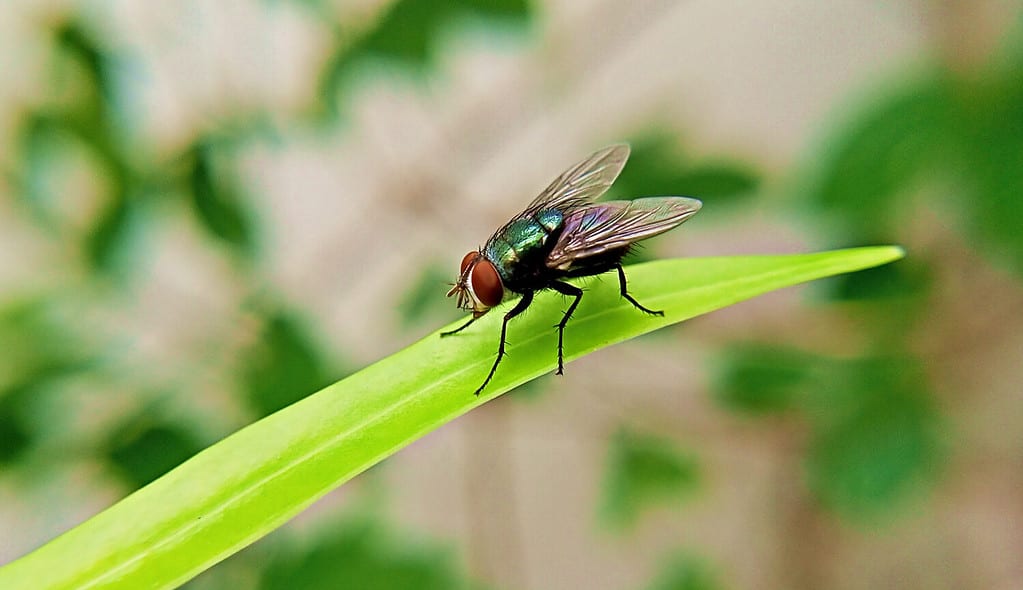
Houseflies are the most common fly species you will find in your house.
©AvishekS/Shutterstock.com
When Are Flies Most Active?
You might have noticed that you see the most flies during the day in the summertime. That’s because they thrive in warm weather. In the winter, flies will huddle together and look for a warm hiding place before dying. Many will crawl into small crevices in walls, barns, gaps in window frames, and door frames to shelter from the cold.
Houseflies are active during the day and live the longest when temperatures are between 50°F and 80°F. When the sun goes down, houseflies will rest and be ready to start their day again in the morning.
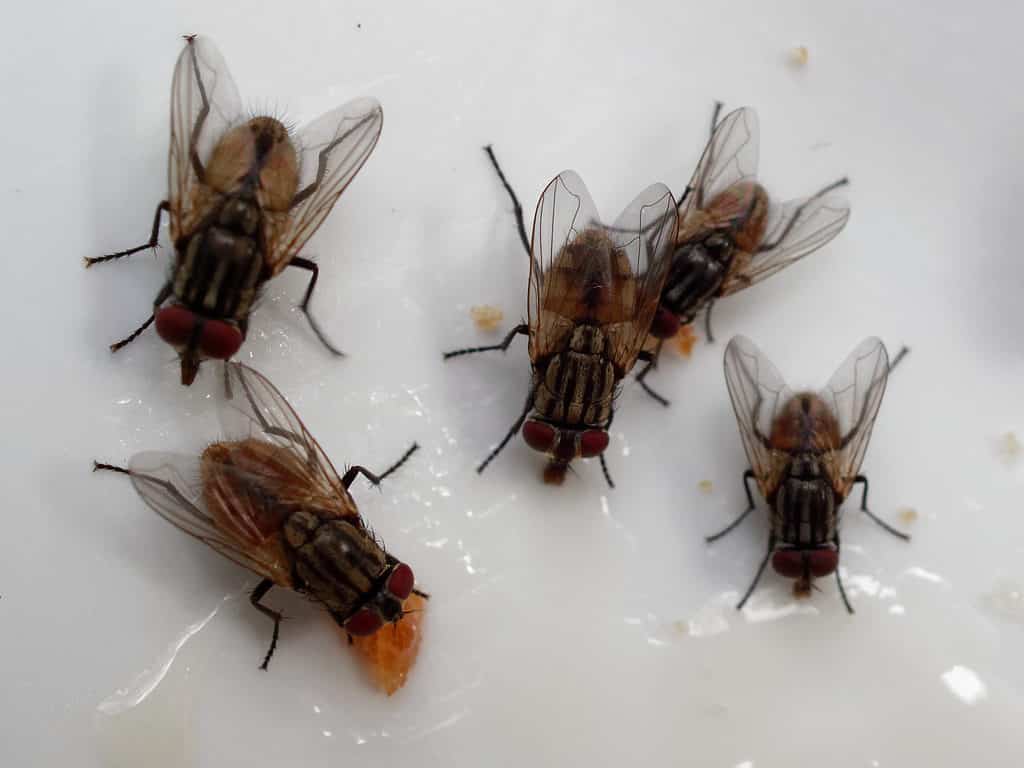
Flies are active during the day when the weather is warm and find a place to rest at night.
©iStock.com/PattayaPhotography
Where Do Flies Nest Indoors?
Flies don’t nest, but they lay their eggs indoors and outdoors in every nook and cranny they deem a safe space. They are attracted to decaying matter, so if old food is lying around, flies will lay eggs in the home because food sources are available.
Some of the most common areas you will find flies indoors include the following.
- Around windows and doors
- Cracks in the ceiling and walls
- Floors
- In and around trash bins
- Light fixtures
- Around pet food bowls
Where Do Flies Nest Outdoors?
Trying to enjoy your yard and being swarmed by flies can be frustrating. They will land on your food, fly around your body, and irritate everyone in sight. It is inevitable to spot flies during the summer months in your yard. But where do these pesky bugs lay eggs?
Some of the most common areas you will find flies outdoors include the following.
- In bushes and plants
- Fence wires
- In and around trash bins
- On compost piles
- On or near animal feces
- Sides of structures or homes
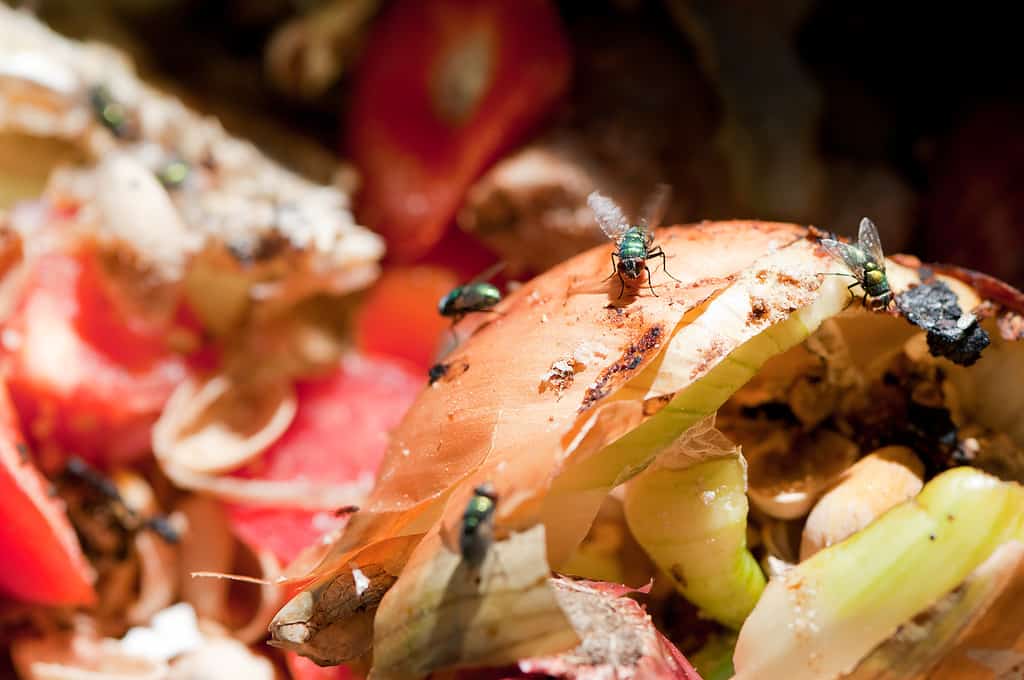
Flies rest and lay eggs in and around trash cans, compost piles, rotting food, and grass clippings.
©GaryRadler/iStock via Getty Images
How to Get Rid of Flies
If you find many flies in your house or yard, it might be time to do some spring cleaning. The following are some natural methods you can implement to get rid of your new unwelcome guests.
Keep Your Home Clean
Flies are attracted to spilled food, dirty dishes, pet food, and excess moisture. One of the best ways to eliminate flies is to clean the mess. If it isn’t refrigerated, put all food in sealed containers and wipe up spills with soap and water. Clean pet food bowls regularly, especially if you use wet pet food. In addition, if you have litter boxes, clean the litter box and around the area daily, as it will attract flies.
If you have flies outdoors, clean pet feces around the property, and remove and wash garbage cans and compost piles. If you see flies congregating on parts of the walls around your home, wash the area with soap and water.
Use Fly Traps
Fly traps might not look great, but it is highly effective and works incredibly well outdoors. There are two types – fly paper and container traps. Fly paper, also known as sticky fly strips, has a fly attractant on one side and an adhesive on another. When flies come in contact with the sticky side, they get stuck. Container traps contain bait at the bottom of the container. The bait will lure the flies into the container and funnel them to the bottom to trap them.
You can make your own fly trap with household items if you don’t want to use commercial products. Use a wine bottle with leftover wine in it, add two teaspoons of maple syrup and dish soap. Make a funnel with a piece of paper and put maple syrup along the wall of the paper. Put the funnel in the neck of the wine bottle and viola! A homemade fly trap.
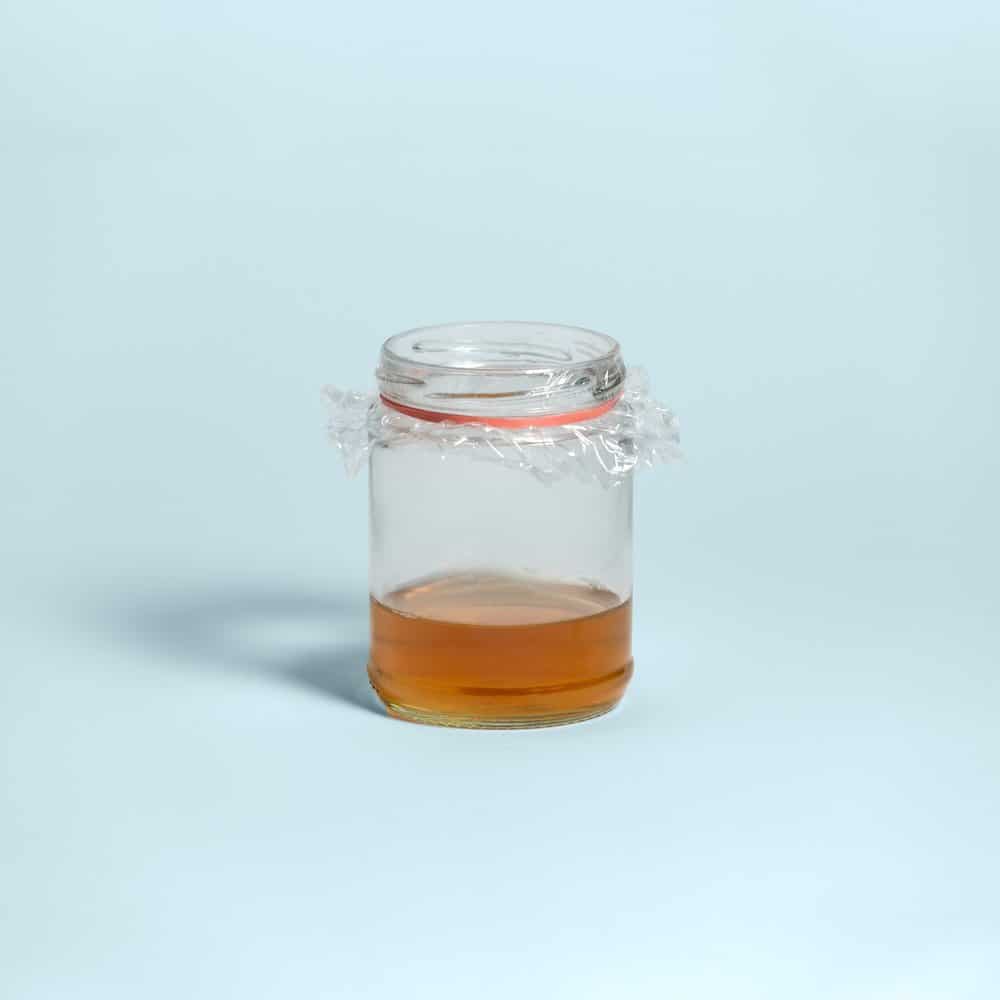
You can make your own fly trap with a bowl of wine vinegar, and soap.
©Jeremy da Silva/Shutterstock.com
Natural Predators
Natural predators are a great way to reduce flies outdoors. Birds and frogs love eating flies, and there are simple methods to attract these fly predators to your yard. Some bird species that eat insects include American goldfinch, ruby-throated hummingbird, barn swallow, common kingfisher, and northern mockingbird. Put bright-colored bird feeders, baths, and houses on your property to attract birds. You can also plant sunflowers, black-eyed Susans, and a variety of other flowers to attract fly-eating birds.
Candles and Essential Oils
Flies are sensitive to certain scents, disrupting their senses, which will deter them from being in your home. The following are common scents that will repel flies:
- Citronella
- Eucalyptus
- Peppermint
- Tea tree
- Lemongrass
Put a candle or oil diffuser near doorways or open windows to keep flies from entering. Mix essential oils and water in a spray bottle to clean surfaces inside and outside the home. In addition, you can spray the mixture around your patio or deck.
Planting herbs like mint, basil, lavender, and citronella around your garden will help keep flies and other insects away.
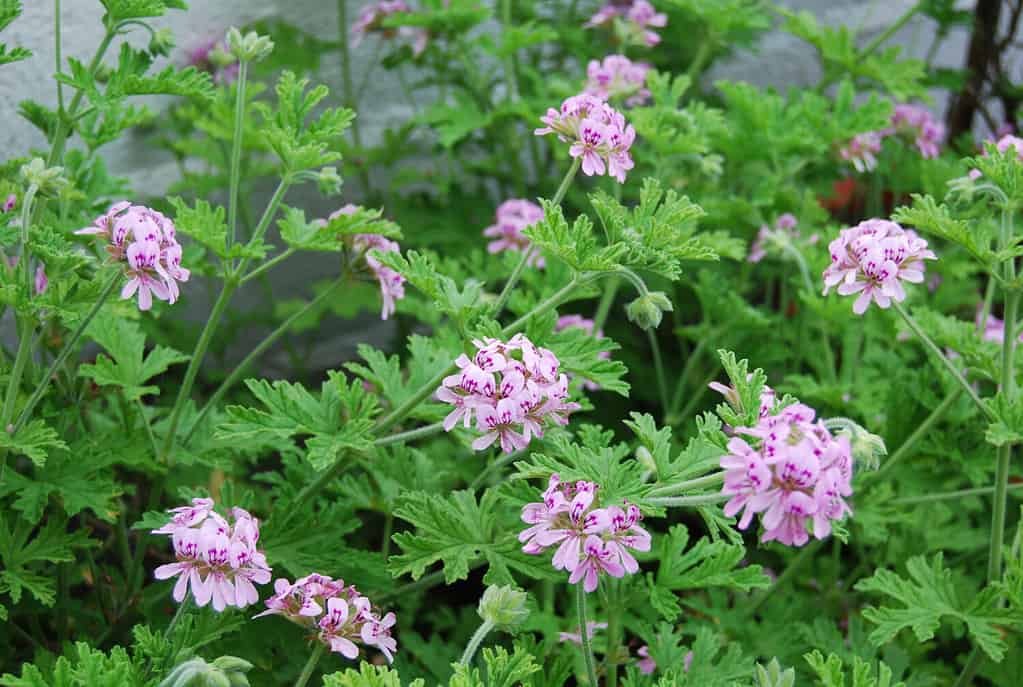
You can grow citronella around your home to keep flies away.
©Fehmi/Shutterstock.com
Fans
Believe it or not, something as simple as a fan can keep flies and mosquitos out of your living space. Flies prefer calm wind conditions, and when it is windy, they consume more energy than they like. Indoor and outdoor ceiling or portable fans will help keep insects at bay, such as bees, mosquitos, flies, and gnats.
How Many Flies Are There in the World?
It would be virtually impossible to determine how many flies there are worldwide. However, they can be found on every continent, including Antarctica. With more than 120,000 species of flies, it’s no wonder you can find various species throughout the United States. Flies reproduce 10 – 12 times in one lifetime, so there is never a shortage of flies all year round.
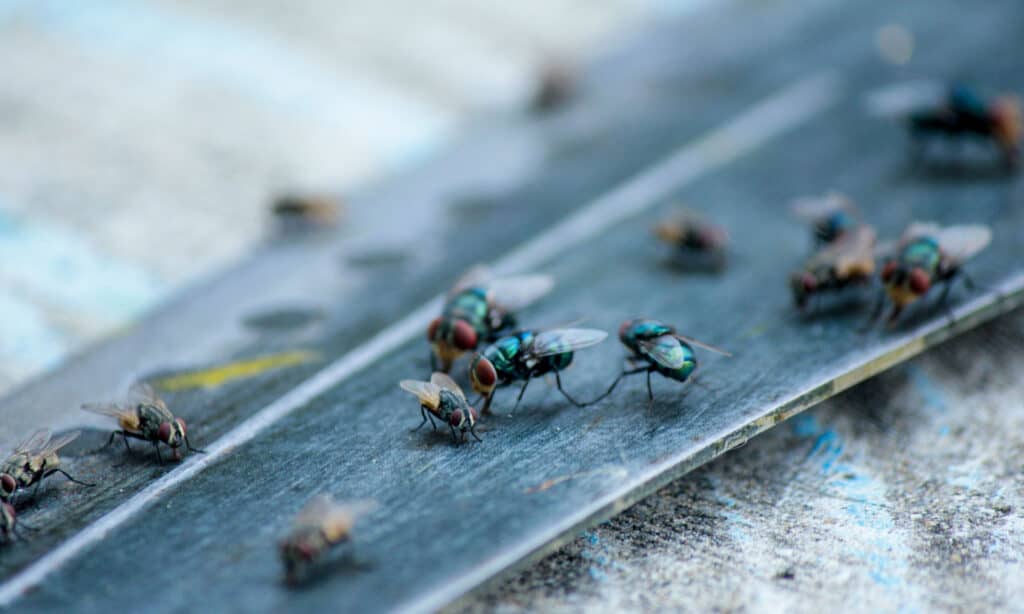
Flies rest and lay eggs in cracks and crevices around windows and doors.
©Mr.Samarn Plubkilang/Shutterstock.com
Which State has the Most Flies?
Determining the states with the most flies is difficult as population sizes vary according to environmental factors, including humidity, temperature, and the presence of food sources. However, in 2021, there were approximately 1,890 searches per month on Google for exterminating flies, with the searches peaking in Louisiana.
Final Thoughts
While flies serve a purpose in the environment, they are pesky insects that can bother us indoors and outdoors. Flies don’t make nests, but find places to rest and lay eggs. Look in gaps in the walls, around rotting food and plants, trash cans, and pet bowls. If you find a lot of flies, clean the area thoroughly and set out fly traps to get rid of them.
The photo featured at the top of this post is © Eric Isselee/Shutterstock.com
Thank you for reading! Have some feedback for us? Contact the AZ Animals editorial team.



